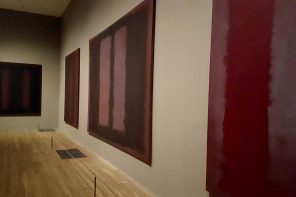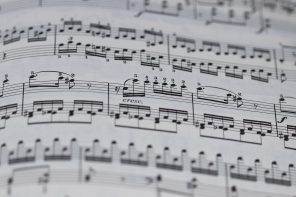Matthew Nelson reviews Mary McCampbell’s exciting new book on art and empathy for Transpositions.
Mary W. McCampbell, Imagining Our Neighbors as Ourselves: How Art Shapes Empathy. Minneapolis: Fortress Press, 2022, 219 pp., £19.99 hardcover.
Can the arts help us to fulfil Jesus Christ’s commandment to ‘love our neighbours as ourselves’? Mary McCampbell, Associate Professor of Humanities at Lee University, answers with a resounding ‘yes’ in Imagining Our Neighbors as Ourselves: How Art Shapes Empathy. By exploring the ways art is capable of both informing and challenging our perceptions of ourselves, others and the world, McCampbell shows how art can cultivate in us the empathy of Christ, whose incarnation ‘is the most complete, profound embodiment of empathy in history’.[i] Through readings of classic and contemporary literature, film and TV, she explains how such works can function like the parables of Christ or the prophet Nathan’s story of the ewe lamb told to King David[ii]—convicting us, softening our hearts and unblinding us so that we might recognise one another as fellow bearers of God’s image and thereby learn to love as Christ loves.
McCampbell notes that usual concepts of empathy and what it means to be a neighbour, such as psychologist Paul Bloom’s formulation, ‘to put yourself in [others’] shoes, to feel [their] pain’,[iii] are helpful but ultimately limited. Christian empathy is broader than this. It ‘asks us to be both self-sacrificial and intentional as we reach beyond our usual circles and experiences to identify with those who are outcast, misunderstood, abused’.[iv] In turn, McCampbell suggests that art can be a means by which we exercise such intentionality. By challenging our tendencies to uncritical consumption and complicity within an unjust status quo, art can help us overcome what Walter Brueggemann calls ‘the empire’ or ‘royal consciousness’, in which we surround ourselves with ‘a cocoon of like thinkers who look and live the same way we do’.[v] Exemplifying this kind of art are the narratives McCampbell discusses, ‘prophetic’ works that, as such, counter the ‘royal consciousness’ by revealing our distortions and inviting us to see one another as God sees us.[vi]
McCampbell’s approach is admirably broad and deep, both in terms of her concise summaries and critiques of thinkers like Pascal and Nietzsche, and regarding her eclectic selection of artworks. Readings of Terrence Malick’s contemplative film The Tree of Life rub shoulders with reflections upon Abel Ferrara’s vampire film The Addiction and Douglas Coupland’s Life After God, while Sufjan Stevens’ album The Age of Adz is considered alongside Lorraine Hansberry’s play A Raisin in the Sun, and Samuel Taylor Coleridge’s nineteenth-century poem ‘The Lime-Tree Bower My Prison’ is discussed next to Craig Gillespie’s quirky film Lars and the Real Girl. Highlights of her insightful and multifaceted readings include her take on Paul Thomas Anderson’s film Magnolia, which considers its highly enigmatic Exodus-referencing ending; her reading of Vince Gilligan’s TV series Better Call Saul, which relates the story to the parable of the prodigal son and his elder brother; and her discussions of Angie Thomas’s novel The Hate U Give and Dave Eggers’s novel What is the What, which examine how racial, ethnic and religious prejudices prevent us from recognising our neighbours. McCampbell’s work is also commendable for drawing attention to several worthy but largely overlooked stories, such as the TV show Rectify or Craig Thompson’s graphic novel Blankets.
While there is much value in McCampbell’s accessible approach, those already familiar with this artistic, philosophical and theological territory may desire further exploration. This is ultimately a minor quibble, however, for the book does not seem meant as a theological treatise, but rather as a theologically informed invitation to be reoriented in one’s relationship to art, neighbour and God. Another potential issue is that her focus upon art’s transformative capacity at times creates the impression of instrumentalising art, as though its value is exclusively found in how it cultivates empathy. Although a nod towards art’s other qualities would have been helpful, McCampbell’s exploration of the particular empathy-shaping capacity of art is still noticeably multidimensional, and the limits of her approach prevent her central argument from becoming either sprawling and unfocused or overly specialised and esoteric. Overall, McCampbell strikes an effective balance that handles a diverse web of materials with admirable deftness, acuity and heart-stirring exposition.
Delightfully expansive and thoughtful, Imagining Our Neighbors as Ourselves is a vital resource for all who are interested in exploring intersections between the arts and Christian faith. Her work will—this reader hopes!—expand our canons of worthwhile narrative art and challenge ingrained aesthetic preferences, and it merits wide readership among all who seek to both imagine and truly love our neighbours as ourselves.
[i] Mary W. McCampbell, Imagining Our Neighbors as Ourselves: How Art Shapes Empathy (Minneapolis: Fortress Press, 2022), 3.
[ii] 2 Samuel 12: 1-15 RSV.
[iii] McCampbell, 2–3.
[iv] Ibid., 3.
[v] Ibid., 11.
[vi] Ibid., 111.





